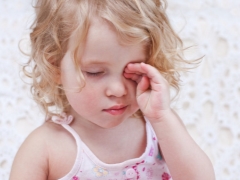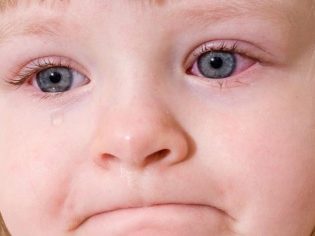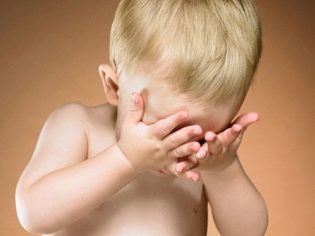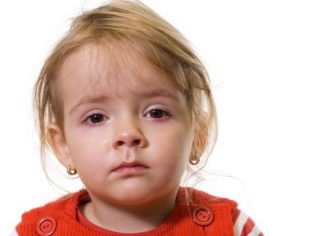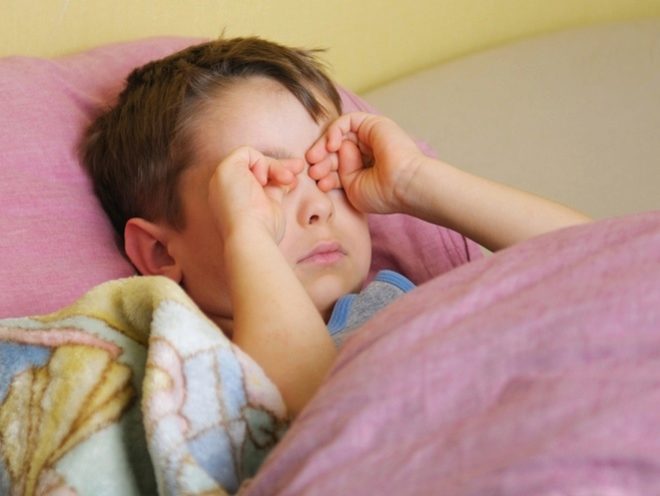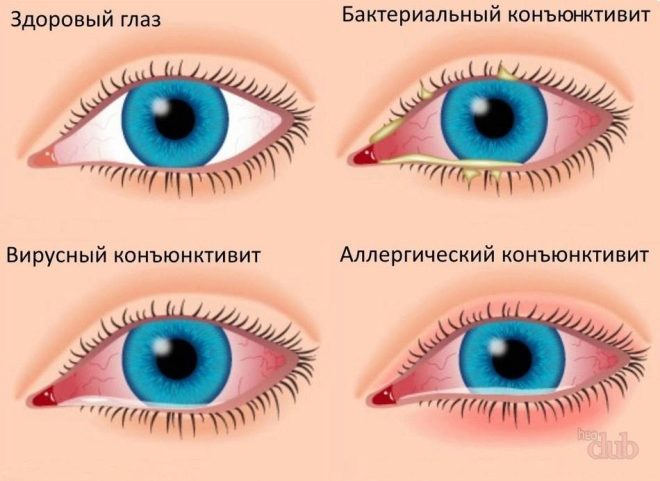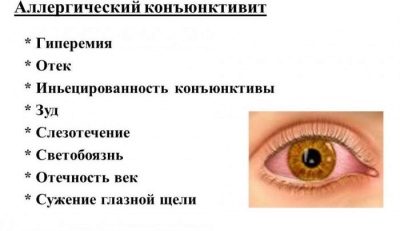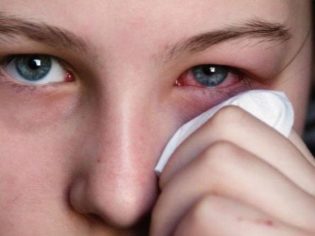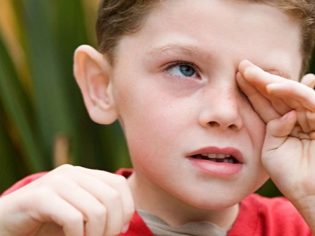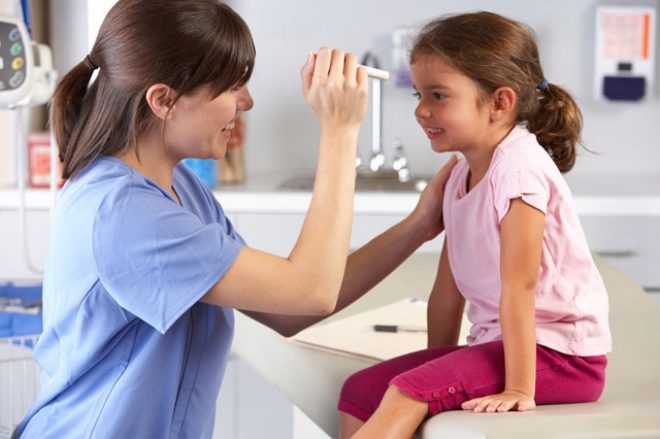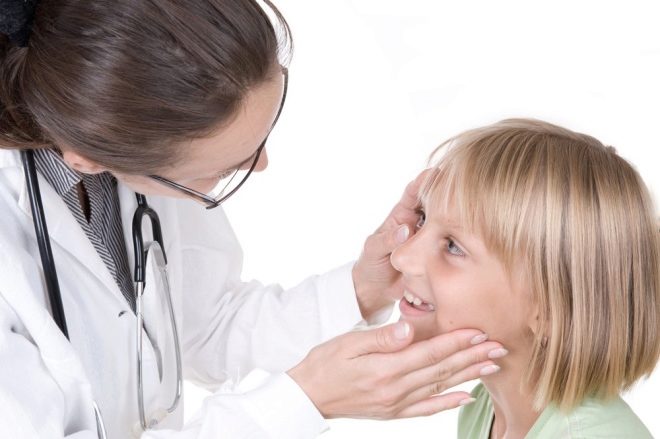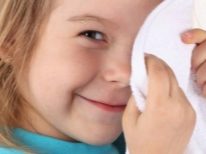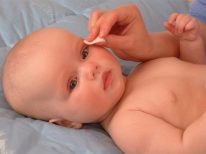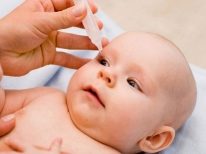Allergic conjunctivitis in children
One of the manifestations of allergy in children may be the development of conjunctivitis. Especially often it develops in crumbs in the first year of life. Bright symptoms of the disease cause severe discomfort to the baby. Late assistance may lead to life-threatening complications.
How is it developing?
The start of inflammation begins after exposure to a provoking factor. For this disease, such a provocateur is any foreign substance - an allergen. Children's allergic reactions are quite acute and rapid. All clinical symptoms may appear within a few hours after the onset of the disease.
Most often allergic conjunctivitis occurs when in contact with pollen or on the flowering of various plants. The peak incidence is observed in spring and summer. Every second child who has a tendency to allergic reactions may experience an exacerbation during flowering. The disease develops very quickly. Literally, within a few hours from the moment the allergen hit, the first clinical manifestations of the disease appear.
Another equally common cause of allergic conjunctivitis is the intolerance of certain foods. If the baby is allergic to citrus fruits or seafood, then he may also have all the symptoms characteristic of inflammatory eye disease. This is due to the rapid spread of inflammation throughout the body.
In far fewer cases, allergic conjunctivitis children may develop by inhaling vapors of various chemicals. Dr. Komarovsky notes that the most common cause of such forms of disease may be contact with adhesives. Children attending educational institutions are not insured against the development of a similar allergic reaction.
Babies who do not tolerate household dust or household dust mites may experience allergic conjunctivitis during sleep or simply in a crib. The fact is that ticks very often live in pillows. If you do not regularly hold a special disinfectant treatment, they can multiply very quickly and lead to the development of these allergic reactions. This is especially true for toddlers and infants.
In the summertime, the bites of bees, wasps and other various insects can be sources of allergies. Poison, which they emit upon contact, is very dangerous for a small organism. A huge amount of biologically active substances contained in it in a short time causes the entire cascade of allergic reactions in a baby. Symptoms appear rapidly and require immediate assistance.
All allergic reactions (regardless of the provocateur factor) have common clinical manifestations.. In babies of different ages, they may appear somewhat differently. At the weakened and newborn children allergies proceed usually much brighter and heavier. For babies with a good level of immunity, the disease can manifest itself in a mild degree and be fairly well controlled.
Main symptoms and signs
If allergies occur in a child, conjunctivitis occurs rather quickly. This unfavorable disease causes a lot of discomfort in the baby.As a rule, no more than 24 hours pass from the moment of the provoking factor to the development of the inflammatory process in the eyes.
The most common symptoms of conjunctivitis are:
- Severe redness. The smallest vascular eye due to the inflammatory process strongly protrude. In severe cases, even a hemorrhage in the eye can be observed, but this is quite rare. The affected eye does not look the best way against the background of eyelid edema. The process is two-sided. Damage to only one eye in allergic conjunctivitis does not happen.
- Feeling of "sand" in the eyes or foreign body. The most frequent symptom of conjunctivitis. The kid, feeling a foreign object in the eye, tries to blink more often in order to remove it. This brings the child only temporary improvement.
- Severe tearing. It occurs throughout the day. In allergic conjunctivitis, as a rule, the discharge is light and excreted in large quantities. Pus in the classic version of the disease does not happen. Suppuration develops only when it joins the infectious allergic process. bacterial flora.
- Swelling of the eyelids. The allergic process captures not only the mucous membrane, but also all the structures of the eye as a whole. The eyelids swell and swell. It becomes difficult for babies to open and close their eyes. Attempts to do this bring a pronounced pain.
- Characteristic appearance. A child with an allergic reaction strongly changes the facial features. It becomes puffy, with a red tinge. Strongly hanging swollen eyelids give the expression a sullen look. In some cases, the lips and tongue may also swell. With such a development of the disease, it is necessary to treat the baby immediately. If the child has swollen face, immediately call an ambulance.
- Behavior change. Kids during the acute period become very sluggish, discard their favorite dishes. Habitual activities that brought them joy are no longer pleasurable. Kids cry, capricious. Little kids are often asked "on the handle."
All symptoms of allergic conjunctivitis occur at about the same time. In a few hours, the clinical manifestations of the disease multiply. If the baby is not helped in time, the consequences can be dangerous and even life threatening. In many cases, an immediate diagnosis and the prescription of a treatment complex are required.
What tests are needed?
The most common signs of conjunctivitis allow doctors to quickly and correctly make an accurate diagnosis. However, in the event of an allergic reaction and the development of inflammatory eye disease, additional laboratory tests are required.
One of the most important is a complete blood count. This routine test allows you to specify the severity of the disease. Severe eosinophilia (increased eosinophil level) indicates the development of an allergic reaction. Such a simple (but informative) test makes it possible to distinguish allergies from bacterial or viral variants of conjunctivitis.
To determine which allergen is responsible for the development of the disease, additional laboratory tests are required. This method can be used only after the reduction of the acute process. This is usually in 2-3 weeks. Most often, allergy doctors use scarification tests.
In this case, a small sharp object makes small notches on the skin and add a few drops of various allergens. If the baby has an allergic reaction to some external factor, then in the place of such a scratch there will be a moderate redness. The doctor analyzes the results and can determine which allergen is dangerous for the child. The procedure is painless and safe. Conducted for kids of different ages.
One of the most informative tests to date is serological blood tests. In this case, the child is taken venous blood for research. Results are usually in 3-5 days. A laboratory test with a probability of 95-98% will show a child's propensity for allergies caused by a specific external factor. Almost all existing allergens today can be tested in this way.
Conducting a complex of all diagnostic measures is a prerequisite for clarifying the cause that causes an allergic reaction. In the future, knowing the source of the disease, it is much easier to prevent and treat it. Therapy for allergic processes should be carried out immediately. Any delay can greatly increase the development of life-threatening complications for the baby.
Treatment
To eliminate the symptoms of allergic conjunctivitis, a complex of therapeutic measures is required at once. If the child has the first signs of allergy, it is worth starting the treatment in the first minutes.
The treatment of conjunctivitis requires the following therapeutic measures:
·
- Elimination of contact with the provoking factor, if possible. When insect bites - be sure to remove the sting. Better to do it in the emergency room. If the situation does not allow, and you are in places very remote from medical institutions, try to do it yourself.
- During flowering, be sure to wash the eyes of the child after walking. It is not necessary to use special medicines. You can rinse your eyes with chamomile decoction or simply cooled with boiled water. With a clean cotton pad, swipe from the outer corner of the eye to the inner. Use clean cotton for each side. For older children, after each visit to the street, just wash under running water.
- The use of special antihistamine drugs. To date, they can be produced in various forms. Most often in the treatment of conjunctivitis use ophthalmic drops. Doctors prescribe to drip them into each eye (for 7-10 days). Healing eye drops help in a short time to get rid of tearing and itching.
- In severe forms of the disease, when the general condition of the baby is severely deteriorating, the use of hormonal agents is required. As a rule, ambulance (or emergency ward) doctors inject such medications through injections. Afraid of hormones is not worth it! The dose, which is used by experts, is not dangerous and can not somehow harm the baby. The use of hormonal agents is necessary for severe angioedema or the development of adverse complications.
- The appointment of a therapeutic hypoallergenic diet. All babies who have a tendency to allergic reactions, doctors recommend the observance of such nutrition throughout life, and not only in the acute period. The elimination of products that trigger the development of allergies, helps prevent new cases of the disease. A diet rich in protein and essential for life helps to strengthen the immune system and has a positive effect on the growth of the child.
- Eye wash. It is used in each case of the treatment of eye allergic diseases. Repeat the procedure should be at least 2-3 times a day. If the baby has a strong tearing, then you can wash the eyes much more often - according to need.
- The correct daily routine. During the acute period of the disease should not give the baby pronounced load. It is better that he sleep more and gain strength. During the daytime rest in babies, the hormonal and immune systems normalize, the symptoms of an allergic reaction are reduced. When a child closes his eyes, the aggressive effect of the sun on the inflamed mucosa weakens.
Prevention
For the prevention of allergic conjunctivitis, it is important to prevent possible contact of the allergen with the children's body. If a child has severe allergy to flowering of plants or pollen, it is better to travel outside the city to those regions where this period has already passed. Often, kids from central Russia leave with their parents for the south. In southern areas, flowering begins earlier. Such a change in the climate zone will prevent a possible onset of an allergic reaction.
For babies with an already established cause of allergy, you can resort to a fairly new method of treatment - SIT-therapy.
With this method, you can train children's immunity, make it resistant to a specific allergen. Special allergen solutions are introduced into the baby’s body (in very low concentrations). Over time, the immune system begins to actively recognize them. With new contacts in real life, the child does not appear adverse symptoms of an allergic reaction.
Strengthening immunity is also an important preventive measure. Correct hypoallergenic diet, walks in the fresh air allow to activate the immune system, restoring the body. For toddlers, daily walks are indispensable.
Adherence to the hypoallergenic diet is also an important preventive method. In this diet, all products that have a pronounced sensitizing effect on the children's body are completely excluded.. The Pediatric Council has developed special tables in which all products are divided into several categories: highly allergenic, hypoallergenic, and neutral. The diet includes all the basic principles of therapeutic nutrition and is ideal for all babies, regardless of age.
The implementation of the whole complex of therapeutic measures will allow in a fairly short time to eliminate the adverse symptoms of the disease and return the baby to the usual way of life. In the future, only the implementation of preventive measures will help prevent the development of new exacerbations of an allergic reaction. Follow these recommendations should be throughout life.
Dr. Komarovsky will tell you more about allergic conjunctivitis in children in the video below.
